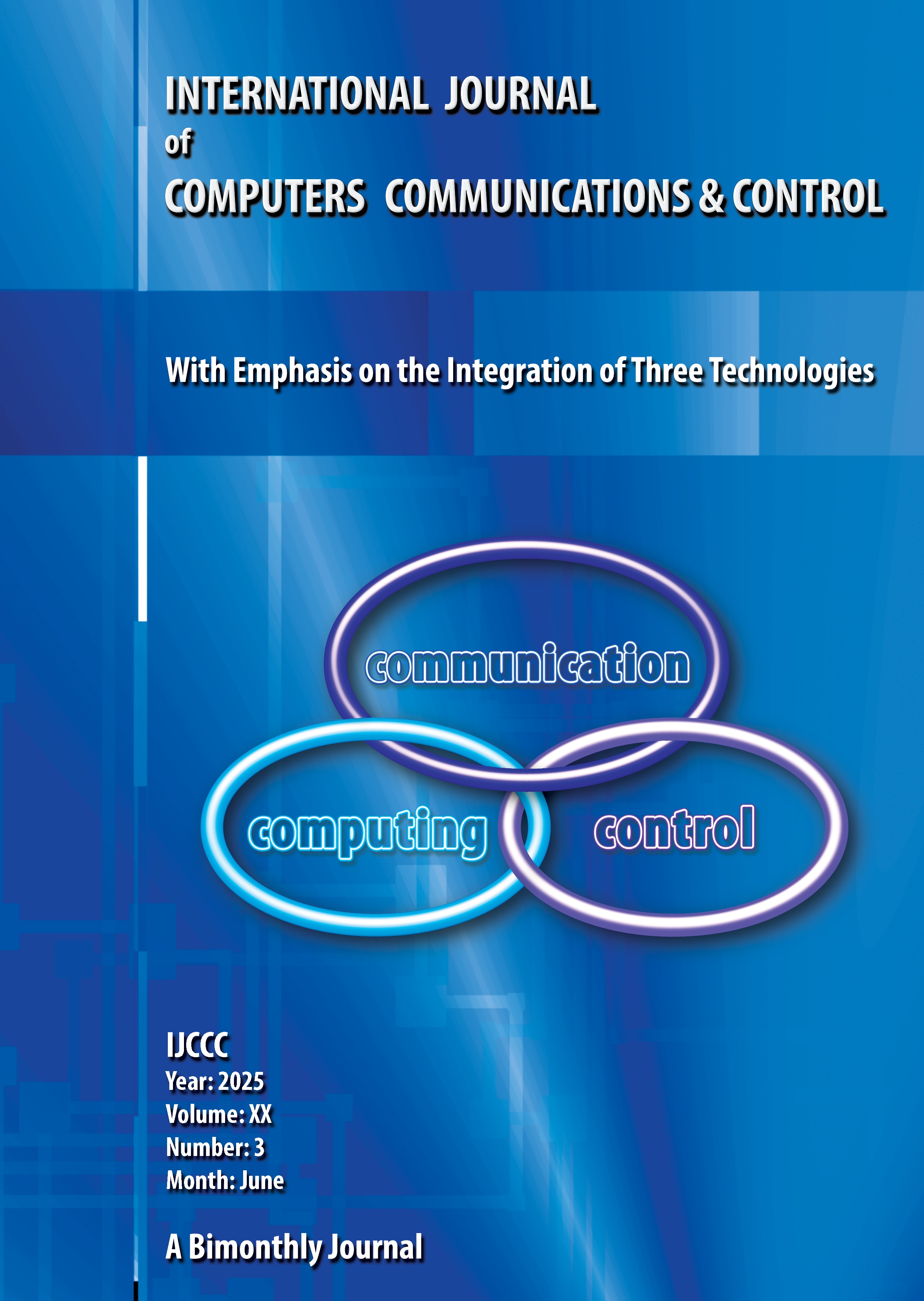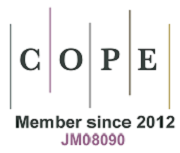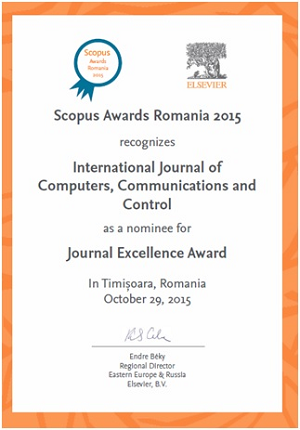Aspect-based Sentiment Analysis in Microblogs through Fuzzy Logic Techniques
DOI:
https://doi.org/10.15837/ijccc.2025.3.6828Keywords:
aspect-based sentiment analysis, microblog, fuzzy logic, intuitionistic fuzzy set, fuzzy neural networks, university studentsAbstract
The advent of social networks has elevated user-generated microblog text to a valuable asset for sentiment analysis, particularly among university students. Their microblogs serve as a portal to their psychological states and emotional inclinations. Traditional sentiment analysis methods, however, encounter limitations when grappling with the intricacies and nuanced variations in emotional expression. This study introduces and implements an innovative framework for aspect-based sentiment analysis (ABSA) of university students’ microblogs, integrating fuzzy logic techniques. A methodology is presented for the identification of emotional tendencies in microblog content, amalgamating sentiment analysis with intuitionistic fuzzy set (IFS) theory. This approach effectively addresses the inherent multidimensionality and ambiguity in emotional expressions. Further, an aspect-based sentiment classification model, rooted in the fuzzy neural network (FNN), has been developed. This model enhances both the precision and sensitivity of sentiment classification. Results from this study signify a marked enhancement in ABSA over conventional methods. This advancement offers substantial support for data-driven decision-making in areas such as higher education management and psychological health services, underscoring the practical applications of the research.
References
Wang, Y. (2023); Web emotion recognition for college students based on microblog text mining, In Proceedings of the 2023 14th International Conference on E-business, Management and Economics, pp. 264-269, 2023. https://doi.org/10.1145/3616712.3616719
Ding, Y.; Chen, X.; Fu, Q.; Zhong, S. (2020); A depression recognition method for college students using deep integrated support vector algorithm, IEEE Access, 8, 75616-75629, 2020. https://doi.org/10.1109/ACCESS.2020.2987523
Zhang, S. (2020); Application of computer data mining technology in the analysis of emotional law, In Journal of Physics: Conference Series, 1574(1): 012102, 2020. https://doi.org/10.1088/1742-6596/1574/1/012102
Zhu, J.; Xue, Y. (2022); Construction of a mental health education model for college students based on fine-grained parallel computing programming, Mathematical Problems in Engineering, 2022: 4206714, 2022. https://doi.org/10.1155/2022/4206714
Rosenthal, S.R.; Tobin, A.P. (2023); Self-esteem only goes so far: The moderating effect of social media screen time on self-esteem and depressive symptoms, Behaviour & Information Technology, 42(15): 2688-2695, 2023. https://doi.org/10.1080/0144929X.2022.2139759
Rasmussen, E.E.; Punyanunt-Carter, N.; LaFreniere, J.R.; Norman, M.S.; Kimball, T.G. (2020); The serially mediated relationship between emerging adults’ social media use and mental well-being, Computers in Human Behavior, 102: 206-213, 2020. https://doi.org/10.1016/j.chb.2019.08.019
Kiciman, E.; Counts, S.; Gasser, M. (2018); Using longitudinal social media analysis to understand the effects of early college alcohol use, In Proceedings of the International AAAI Conference on Web and Social Media, pp. 171-180, 2018. https://doi.org/10.1609/icwsm.v12i1.15012
Ahmed, S.; Monsur Hossain, M.; Pragner, C.; Kimball, M.; Shrivastava, A.; Gildner, J.; McCulloch, S., Sharmin, M. (2022); Constrained life in a multifarious environment-a closer look at the lives of autistic college students, In Proceedings of the 2022 CHI Conference on Human Factors in Computing Systems, pp. 1-17, 2022. https://doi.org/10.1145/3491102.3517788
Zhang, F. X.; Zhang, L. M.; Liu, Z. Y.; Meng, F. Z.; Wang, X. S.; Wen, J. H.; Gao, L. Y. (2024); An Improved Dempster–Shafer Evidence Theory Based on the chebyshev distance and its application in Rock Burst Prewarnings, ASCE-ASME Journal of Risk and Uncertainty in Engineering Systems Part A-Civil Engineering, 10(1): 04023055, 2024. https://doi.org/10.1061/AJRUA6.RUENG-1201
Yang, E.J.; Jin, Y. (2022); Analysis of student emotional states in AP courses through social media based on deep learning, In 2022 IEEE 23rd International Conference on Information Reuse and Integration for Data Science (IRI), pp. 6-11, 2022. https://doi.org/10.1109/IRI54793.2022.00015
Lu, G.; Xie, K.; Liu, Q. (2022); What influences student situational engagement in smart classrooms: Perception of the learning environment and students’ motivation, British Journal of Educational Technology, 53(6): 1665-1687, 2022. https://doi.org/10.1111/bjet.13204
Zhao, X. (2017); Promotion of education path of college students’ marxist values in new media environment, Boletin Tecnico/Technical Bulletin, 55(19): 319-323, 2017.
Saha, K.; Chandrasekharan, E.; De Choudhury, M. (2019); Prevalence and psychological effects of hateful speech in online college communities, In Proceedings of the 10th ACM conference on web science, pp. 255-264, 2019. https://doi.org/10.1145/3292522.3326032
Watts, L.K.; Wagner, J.; Velasquez, B.; Behrens, P.I. (2017); Cyberbullying in higher education: A literature review, Computers in Human Behavior, 69: 268-274, 2017. https://doi.org/10.1016/j.chb.2016.12.038
Cherradi, M.; & El Haddadi, A. (2024). Comparative Analysis of Machine Learning Algorithms for Sentiment Analysis in Film Reviews, Acadlore Transactions on AI and Machine Learning, 3(3), 137-147, 2024. https://doi.org/10.56578/ataiml030301
Nakka, R.; Lakshmi, T. S.; Priyanka, D.; Sai, N. R.; Praveen, S. P.; Sirisha, U. (2024). LAMBDA: Lexicon and aspect-based multimodal data analysis of tweet, Ingénierie des Systèmes d’Information, 29(3), 1097-1106, 2024. https://doi.org/10.18280/isi.290327
Dong, K.; & Tse, Y. K. (2023). Examining Public Perceptions of UK Rail Strikes: A Text Analytics Approach Using Twitter Data, Information Dynamics and Applications, 2(2), 101-114, 2023. https://doi.org/10.56578/ida020205
Liliana, D.Y.; Basaruddin, T.; Widyanto, M.R.; Oriza, I.I.D. (2019); Fuzzy emotion: A natural approach to automatic facial expression recognition from psychological perspective using fuzzy system, Cognitive Processing, 20(4): 391-403, 2019. https://doi.org/10.1007/s10339-019-00923-0
Ton-That, A.H.; Cao, N.T. (2019); Speech emotion recognition using a fuzzy approach, Journal of Intelligent & Fuzzy Systems, 36(2): 1587-1597, 2019. https://doi.org/10.3233/JIFS-18594
Chakraborty, A.; Konar, A.; Chakraborty, U.K.; Chatterjee, A. (2009); Emotion recognition from facial expressions and its control using fuzzy logic, IEEE Transactions on Systems, Man, and Cybernetics-Part A: Systems and Humans, 39(4): 726-743, 2009. https://doi.org/10.1109/TSMCA.2009.2014645
Zhang, L.M.; Chao, W.W.; Liu, Z.Y.; Cong, Y.; Wang; Z.Q. (2022); Crack propagation characteristics during progressive failure of circular tunnels and the early warning thereof based on multi-sensor data fusion, Geomechanics and Geophysics for Geo-Energy and Geo-Resources, 8: 172, 2022. https://doi.org/10.1007/s40948-022-00482-3
Vishnu Priya, R.; Vijayakumar, V.; Tavares, J.M.R. (2020); MQSMER: A mixed quadratic shape model with optimal fuzzy membership functions for emotion recognition, Neural Computing and Applications, 32(8): 3165-3182, 2000. https://doi.org/10.1007/s00521-018-3940-0
Additional Files
Published
Issue
Section
License
Copyright (c) 2025 Quan Gan, Xiangqian Wang, Liang Yan

This work is licensed under a Creative Commons Attribution-NonCommercial 4.0 International License.
ONLINE OPEN ACCES: Acces to full text of each article and each issue are allowed for free in respect of Attribution-NonCommercial 4.0 International (CC BY-NC 4.0.
You are free to:
-Share: copy and redistribute the material in any medium or format;
-Adapt: remix, transform, and build upon the material.
The licensor cannot revoke these freedoms as long as you follow the license terms.
DISCLAIMER: The author(s) of each article appearing in International Journal of Computers Communications & Control is/are solely responsible for the content thereof; the publication of an article shall not constitute or be deemed to constitute any representation by the Editors or Agora University Press that the data presented therein are original, correct or sufficient to support the conclusions reached or that the experiment design or methodology is adequate.








